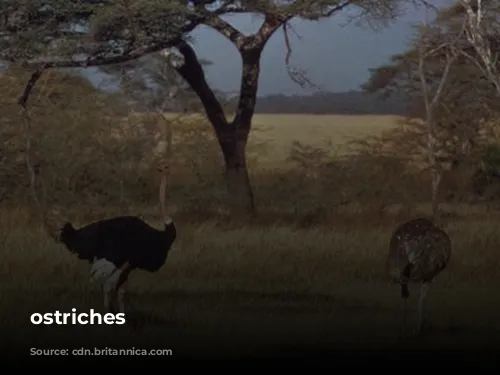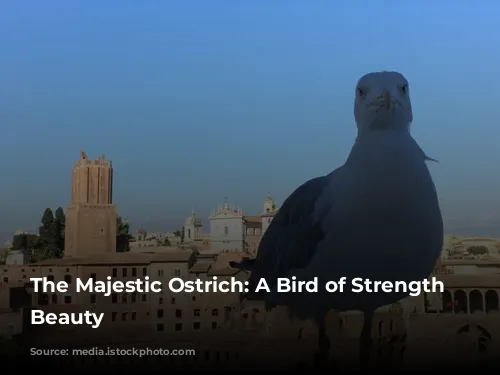The ostrich (Struthio camelus) is an extraordinary creature, a giant flightless bird found only in the open plains of Africa. It stands as the largest living bird, with adult males reaching a towering 2.75 meters (9 feet) tall, almost half of which is its long neck. These majestic birds can weigh over 150 kg (330 pounds), while females are slightly smaller. Their eggs are just as impressive, averaging about 150 mm (6 inches) in length by 125 mm (5 inches) in diameter, making them the world’s largest eggs.
A Bird of Speed and Strength
These ground-dwelling giants are well-adapted for running, thanks to their long, powerful legs, uniquely featuring only two toes. The ostrich is known for its impressive speed, capable of reaching up to 72.5 km (45 miles) per hour when threatened. Their powerful legs also serve as a formidable defense mechanism, as they can deliver dangerous kicks to deter predators.
Social Lives and Breeding Habits
Ostriches are social animals, forming small groups or even large aggregations depending on the time of year. Courtship displays are quite fascinating, with the males playing a more active role, performing elaborate gyrations and head-waving rituals. The females signal their readiness to mate by spreading their wings and holding them close to the ground.
Breeding is a communal affair, with multiple females sharing a single male. Communal nests are scraped in the ground, holding over a dozen shiny, whitish eggs. The male takes on the responsibility of incubating the eggs at night, while the females take turns during the day. Chicks hatch after approximately 40 days, and within a month, they are already able to keep up with the adults.
An Enduring Symbol of Africa
Ostrich plumes have a rich history, adorning the helmets of medieval European knights and later becoming a sought-after commodity for women’s fashion in the 19th century. This demand led to the establishment of ostrich farms across the globe, but the trade eventually collapsed after World War I. Today, ostriches are primarily raised for their meat and leather, a soft, fine-grained material. They have also been trained for saddle and sulky racing, though their lack of endurance makes them less than ideal for these activities. Despite their size and strength, ostriches are surprisingly well-suited to captivity, with an average lifespan of around 50 years.
A Diverse Group of Flightless Birds
The ostrich belongs to a group of flightless birds known as ratites, which also includes kiwis, emus, cassowaries, and rheas. While there were previously considered to be several different species of ostrich, they are now considered to be races of the single species, Struthio camelus. This includes the North African ostrich, the most widely recognized subspecies, as well as the Syrian ostrich which sadly went extinct in 1941.
The ostrich is a remarkable creature with a fascinating history and a unique role in the African ecosystem. Its size, speed, and strength make it a truly impressive animal, while its social behavior and breeding habits provide a glimpse into the complex lives of these fascinating birds.











